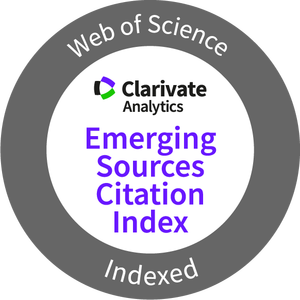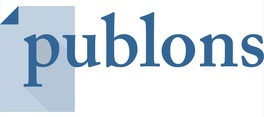The effect of four-week high-intensity interval training on increasing physical fitness and specific speed in young Pencak Silat athletes
Abstract
This study aimed to determine the effect of high-intensity interval training (HIIT) on increasing aerobic performance and speed, specifically for Pencak Silat athletes. Thirteen student-level Pencak Silat athletes were selected using consecutive sampling methods and then divided into two groups: the experimental group (EG, n = 7) and the control group (CG, n = 6). The HIIT protocol on EG consists of 2 minutes x 3 sets, with a 1-minute rest interval between sets to adapt to the motion demands during the match. Yo-Yo Intermittent Recovery Test Level 1 (YYIR1) was used to measure aerobic performance capacity (VO2max) and FST to measure total kicks between pre- and post-HIIT. The results of the study showed that there was an increase in VO2max on EG (44.86±1.90 vs. 48.42±2.67 mL/kg/min; p=0.000) and CG (42.43±1.85 vs. 44.02±2.18 mL/kg/min; p=0.020). The mean delta in VO2max increased between the two groups, with a significant difference (p ≤ 0.05), and the EG produced a larger effect size compared to the CG. For total kicks, there was a substantial increase between pre-post on EG (105.72±7.89 vs. 112.57±8.91 n; p=0.001), while CG did not show any significant difference (p ≥ 0.05). These findings prove that the Pencak Silat-specific HIIT protocol can improve aerobic performance and speed specifically for Pencak Silat athletes.
Downloads
-
Abstract357
-
PDF284
References
Aziz, A. R., Tan, B., & Teh, K. C. (2002). Physiological responses during matches and profile of elite pencak silat exponents. Journal of Sports Science and Medicine, 1(4), 147–155.
Bhagwat, A., Patole, S., & Golhar, S. (2021). The effectiveness of 5 weeks of high intensity interval training on cardiovascular endurance in karate players: An experimental study. International Journal of Applied Research, 7(7), 318–323.
Bishop, D., Girard, O., & Mendez-Villanueva, A. (2011). Repeated-sprint ability - part II: recommendations for training. Sports Medicine, 41(9), 741–756. https://doi.org/10.2165/11590560-000000000-00000
Buchheit, M., & Laursen, P. B. (2013). High-intensity interval training, solutions to the programming puzzle: Part II: Anaerobic energy, neuromuscular load and practical applications. Sports Medicine, 43(10), 927–954. https://doi.org/10.1007/s40279-013-0066-5
Chaabene, H., Hachana, Y., Franchini, E., Mkaouer, B., & Chamiri, K. (2017). Physical and physiological profile of Iranian world-class karate athletes. Biomedical Human Kinetics, 9(1), 115–123. https://doi.org/10.1515/bhk-2017-0017
da Silva Santos, J. F., & Franchini, E. (2016). Is frequency speed of kick test responsive to training? A study with taekwondo athletes. Sport Sciences for Health, 12(3), 377–382. https://doi.org/10.1007/s11332-016-0300-2
del Vecchio, F. B., Hirata, S. M., & Franchini, E. (2011). A review of time-motion analysis and combat development in mixed martial arts matches at regional level tournaments. Perceptual and Motor Skills, 112(2), 639–648. https://doi.org/10.2466/05.25.PMS.112.2.639-648
Enrique, D., Tapia, A., Barrera, V. R., Ferreira, J., Santos, S., Franchini, E., Valdés-Badilla, P., Orihuela, P., & Herrera-Valenzuela, T. (2020). High-intensity interval training improves specific performance in taekwondo athletes. Revista de Artes Marciales Asiáticas, 15(1), 4–13. https://doi.org/10.18002/rama
Franchini E. (2020). High-Intensity Interval Training Prescription for Combat-Sport Athletes. International Journal of Sports Physiology and Performance, 15(6), 767–776. https://doi.org/10.1123/ijspp.2020-0289
Franchini, E., Cormack, S., & Takito, Monica, Y. (2019). Effects of High-Intensity Interval Training on Olympic Combat Sports Athletes’ Performance and Physiological Adaptation: A Systematic Review. Journal of Strength and Conditioning Research, 33(1), 242–252. https://doi.org/10.1519/JSC.0000000000002957
Franchini, E., del Vecchio, F. B., Matsushigue, K. A., & Artioli, G. G. (2011). Physiological profiles of elite judo athletes. Sports Medicine, 41(2), 147–166. https://doi.org/10.2165/11538580-000000000-00000
Franchini, E., Julio, U., Panissa, V., Lira, F., Agostinho., & Branco, B. (2017). Short-term low-volume high-intensity intermittent training improves judo-specific performance. Journal of Science and Medicine in Sport, 20, 219-229.
Herrera-Valenzuela, T., Carter, J., Leiva, E., Valdés-Badilla, P., Ojeda-Aravena, A., & Franchini, E. (2021). Effect of a short hiit program with specific techniques on physical condition and activity during simulated combat in national-level boxers. Sustainability, 13(16), 1-11. https://doi.org/10.3390/su13168746
Herrera-Valenzuela, T., Valdés-Badilla, P., & Franchini, E. (2020). High-intensity interval training recommendations for combat sports athletes during the COVID-19 pandemic. Revista de Artes Marciales Asiáticas, 15(1), 1-3. https://doi.org/10.18002/rama.v15i1.6230
Ihsan, N., Yulkifli, Y., & Yohandri, Y. (2018). Technology Based Instrument of Pencak Silat Speed Kick. Journal of Sociotechnology. 17(1), 124-131. https://doi.org/10.5614/sostek.itbj.2018.17.1.12
International Pencak Silat Federation. (2013). Competition Regulations (1st ed.).
Krustrup, P., Mohr, M., Amstrup, T., Rysgaard, T., Johansen, J., Steensberg, A., Pedersen, P. K., & Bangsbo, J. (2003). The Yo-Yo intermittent recovery test: Physiological response, reliability, and validity. Medicine and Science in Sports and Exercise, 35(4), 697–705. https://doi.org/10.1249/01.MSS.0000058441.94520.32
Lopes-Silva, J. P., & Franchini, E. (2021). Developing anaerobic power and capacity for combat sports athletes. Revista de Artes Marciales Asiáticas, 16(1), 60–85. https://doi.org/10.18002/rama.v16i1s.7001
Lubis, J., Fitrianto, E. J., Sukiri, Haqiyah, A., Setiakarnawijaya, Y., Robianto, A., Sukriadi, S., Nurulfa, R., Irawan, A. A., & Sumartiningsih, S. (2021). Does aerobic interval training induce a decrease in body weight in pencak silat elite athletes? Journal of Physical Education and Sport, 21, 2372–2380. https://doi.org/10.7752/jpes.2021.s4318
Marcon, G., Franchini, E., Jardim, J. R., & Barros Neto, T. L. (2011). Structural Analysis of Action and Time in Sports: Judo. Journal of Quantitative Analysis in Sports, 6(4), 1-19. https://doi.org/10.2202/1559-0410.1226
Monteiro, J. R. F., Vecchio, F. B. del, Vasconcelos, B. B., & Coswig, V. S. (2020). Specific wushu sanda high-intensity interval training protocol improved physical fitness of amateur athletes’: A pilot study. Revista de Artes Marciales Asiáticas, 14(2), 47–55. https://doi.org/10.18002/rama.v14i2.6029
Ouergui, I., Hssin, N., Haddad, M., Franchini, E., Behm, D. G., Wong, delP., Gmada, N., & Bouhlel, E. (2014). Time-motion analysis of elite male kickboxing competition. Journal of Strength and Conditioning Research, 28(12), 3537–3543. https://doi.org/10.1519/JSC.0000000000000579
Puspodari, P., Wiriawan, O., Setijono, H., Arfanda, P. E., Himawanto, W., Koestanto, S. H., Hantoro, B., Lusianti, S., Putra, R. P., Prasetiyo, R., & Pranoto, A. (2022). Effectiveness of Zumba Exercise on Maximum Oxygen Volume, Agility, and Muscle Power in Female Students. Physical Education Theory and Methodology, 22(4), 478–484. https://doi.org/10.17309/tmfv.2022.4.04
Putera, S. H. P., Setijono, H., Wiriawan, O., Nurhasan, Muhammad, H. N., Hariyanto, A., Sholikhah, A. M., & Pranoto, A. (2023). Positive Effects of Plyometric Training on Increasing Speed, Strength and Limb Muscles Power in Adolescent Males. Physical Education Theory and Methodology, 23(1), 42–48. https://doi.org/10.17309/tmfv.2023.1.06
Ribeiro, R., Oliveira Silva, J. Í., Dantas, M. G. B., Menezes, E. S., Pereira Arruda, A. C., & Schwingel, P. A. (2015). High-intensity interval training applied in Brazilian Jiu-jitsu is more effective to improve athletic performance and body composition. Journal of Combat Sports and Martial Arts, 6(1), 1–5. https://doi.org/10.5604/20815735.1166073
Sari-sarraf, V., Parnian-khajehdizaj, N. & Amirsasan, R. (2020). High-Intensity Interval Training and Continuous Training with Intermittent Calorie Restriction in Overweight Women: Effect on the Inflammation and Lipid Profile. Spor Bilimleri Araştırmaları Dergisi, 5(2), 230-246 . https://doi.org/10.25307/jssr.819590
Sartono, N., Puspitaningrum, R., Lubis, J., & Siregar, N. M. (2018). Profile energy national athlete of Indonesia Pencak silat. AIP Conference Proceedings, 2019 (October 2018), 1–5. https://doi.org/10.1063/1.5061901
Silva, J. J. R., Del Vecchio, F. B., Picanço, L. M., Takito, M. Y., & Franchini, E. (2011). Time-Motion analysis in Muay-Thai and Kick-Boxing amateur matches. Journal of Human Sport and Exercise, 6(3), 490–496. https://doi.org/10.4100/jhse.2011.63.02
Soo, J., Woods, C. T., Arjunan, S. P., Aziz, A. R., & Ihsan, M. (2018). Identifying the performance characteristics explanatory of fight outcome in elite Pencak Silat matches. International Journal of Performance Analysis in Sport, 18(6), 973–985. https://doi.org/10.1080/24748668.2018.1539381
Subekti, N., Syaifullah, R., Fatoni, M., & Syaukani, A. A. (2021). Pencak silat combat match: Time motion analysis in elite athletes championship. Spring Conferences of Sports Science. Costa Blanca Sports Science Events, 21-22 June 2021. Alicante, Spain.
Tabben, M., Coquart, J., Chaabène, H., Franchini, E., Ghoul, N., & Tourny, C. (2015). Time-motion, tactical and technical analysis in top-level karatekas according to gender, match outcome and weight categories. Journal of Sports Sciences, 33(8), 841–849. https://doi.org/10.1080/02640414.2014.96519
Yoshida, H. M., & dos Santos Neto, S. R. (2017). Wushu and Trainning Aspects: A Literature Review. Caderno De Educação Física E Esporte, 14(1), 69–78.
The works and papers that are published in this Journal are subject to the following terms:
1. The Publication Service of the University of Murcia (the publisher) has the Publication Rights (Copyright) to the published papers and works, and favors and permits the reusing of the same under the license indicated in point 2.
© Servicio de Publicaciones, Universidad de Murcia, 2013
2. The papers and works are to be published in the digital edition of the Journal under the license Creative Commons Reconocimiento-No Comercial-Sin Obra Derivada 3.0 España (legal text). The copying, using, spreading, transmitting and publicly displaying of the papers, works or publication are permitted as long as: i) the authors and original sources (Journal, publisher and URL of the publication) are quoted; ii) it is not used for commercial benefit; iii) the existence and specifications of this users license are mentioned.
3. Conditions of Self-Archiving. It is permitted and encouraged that the authors spread electronically the pre-print (before printing) and/or post-print (the revised, evaluated and accepted) versions of their papers or works before their publication since this favors their circulation and early diffusion and therefore can help increase their citation and quotation, and also there reach through the academic community.
The works and papers that are published in this Journal are subject to the following terms:
1. The Publication Service of the University of Murcia (the publisher) has the Publication Rights (Copyright) to the published papers and works, and favors and permits the reusing of the same under the license indicated in point 2.
© Servicio de Publicaciones, Universidad de Murcia, 2013
2. The papers and works are to be published in the digital edition of the Journal under the license Creative Commons Reconocimiento-No Comercial-Sin Obra Derivada 3.0 España (legal text). The copying, using, spreading, transmitting and publicly displaying of the papers, works or publication are permitted as long as: i) the authors and original sources (Journal, publisher and URL of the publication) are quoted; ii) it is not used for commercial benefit; iii) the existence and specifications of this users license are mentioned.
3. Conditions of Self-Archiving. It is permitted and encouraged that the authors spread electronically the pre-print (before printing) and/or post-print (the revised, evaluated and accepted) versions of their papers or works before their publication since this favors their circulation and early diffusion and therefore can help increase their citation and quotation, and also there reach through the academic community.

















